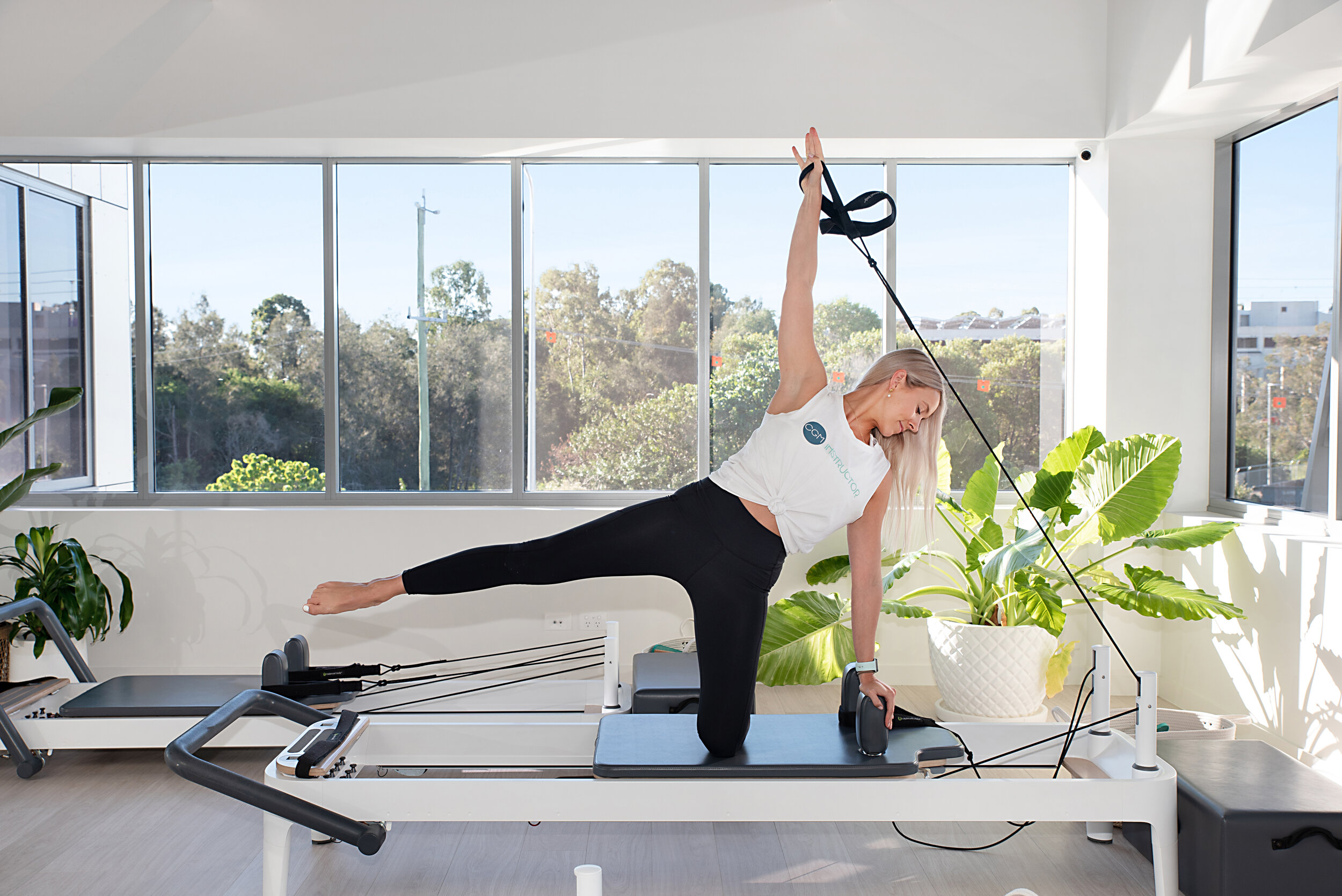
CGM Pilates, Yoga, and Wellness
Pilates Breathing
Breath is one of the principles of Pilates and is fundamental to improving body awareness. So, what is Pilates Breathing?
Breath is one of the key principles of Pilates and is fundamental to improving body awareness. Pilates breathing is developed over time and cultivates synergy between movement and breath. Correct technique can improve your Pilates and ultimately your quality of life. As Joseph Pilates said, “Breathing is the first act of life and the last, our very life depends on it”
So, what is Pilates Breathing? Each exercise has a specific breathing pattern which helps to improve the safety and effectiveness for that exercise. The breathing patterns assist with correct muscle activation, helps supply oxygen to the muscles, remove waste products, and prevents holding breath.
When performing Pilates Breathing we inhale through the nose directing the breath into the sides of the ribs expanding the ribs laterally. This helps to maintain abdominal activation and prevents shallow breathing which can cause the shoulders and neck to tense.
The exhalation is through the mouth and we close the ribcage down and in. The inhale is normal and the exhale is slow and forceful. Exhaling through the mouth allows for a more forceful exhalation and aids in deep abdominal muscle activation. It is important to avoid taking a deep breath when we inhale as this can encourage the spine to arch, losing the abdominal muscle activation.
When we breath the position of our spine changes slightly. Correct breathing patterns support the structures of the spine and reduces the likelihood of injury.
When you are new to Pilates the breath can seem a little overwhelming at first. We suggest focussing on your set-up, posture and movement, and then add the breathing in as you feel comfortable and more confident.
If you’d like to talk about technique with a CGM Pilates Instructor, remember that we’re always available before and after class in our Maroochydore studio, located in the heart of the Sunshine Coast.
See you on the Mat or Reformer soon!
How often should I do Pilates?
So you love Pilates, it makes you feel amazing …but can you do too much?
How often should I do Pilates?
So you love Pilates, it makes you feel amazing…but can you do too much? Most of us know that getting enough rest after exercise is essential for muscle recovery but many of us still overtrain or feel guilty to take a day off! Our body repairs and strengthens itself in the time between workouts, and continuous training can actually weaken the strongest of us!
What happens during recovery?
Recovery time is the period that the body uses to adapt to the stress of exercise and this is when the real training takes place. Exercise causes changes in the body such as muscle tissue breakdown so rest and recovery allows our body to replenish energy stores and repair
damaged tissues. Without sufficient time to repair, muscle tissue breakdown can continue, leading to new injury, reoccurrence of old injuries and reduced performance/ ability during future sessions.
How to recover?
Recovery doesn’t always mean being inactive, you can include active recoveries into your exercise regime. It is also important that you include a variety of training into your schedule. On a rest day, incorporating walks, hikes, swimming and stretching can help you recover so that your body can work efficiently during your next class.
Bottom line.. How much is too much?
When we undergo the stress of physical exercise, our body adapts and becomes more efficient. However, there are limits to how much stress the body will tolerate before it risks injury. Doing too much too quickly can cause damage and doing too little can result in little to no improvement. This is why it is important to find a maintain a balance between exercise and recovery. Each individual has their own personal goals and this should dictate how often you participate in a Pilates class. If your goal is to increase mobility, you can notice changes by attending one class a week, if you are looking for improvements in strength, mobility, balance, coordination then twice a week can elicit change. Finally, if your goal is to achieve a full body transformation including changes in muscle tone, strength, posture and mobility then we recommend 3-4 times per week. It is important that you find balance in your active lifestyle, remain in tune with your body and look after yourself. After all, our body is the only place we have to live! If you are a Pilateholic like us and attending a Pilates class every day or on consecutive days, it is recommended that you have at least 12 hours rest in between classes, with 24 hours ideally.. Remember it's all about quality, not quantity!
Written by Marissa Cumming, CGM Pilates Instructor and Accredited Exercise Physiologist
"Tis the Season to be Jolly"
It's the festive season which means eating, eating, drinking, and more eating. So if you'r'e looking for a quick no fuss work out you can do in between courses then we've got you covered.
Try our 10 minute Mat class below, feel free to shorten or extend the number of repetitions to suit your body.
As always move safely and only work within your own limits. Happy Holidays!


